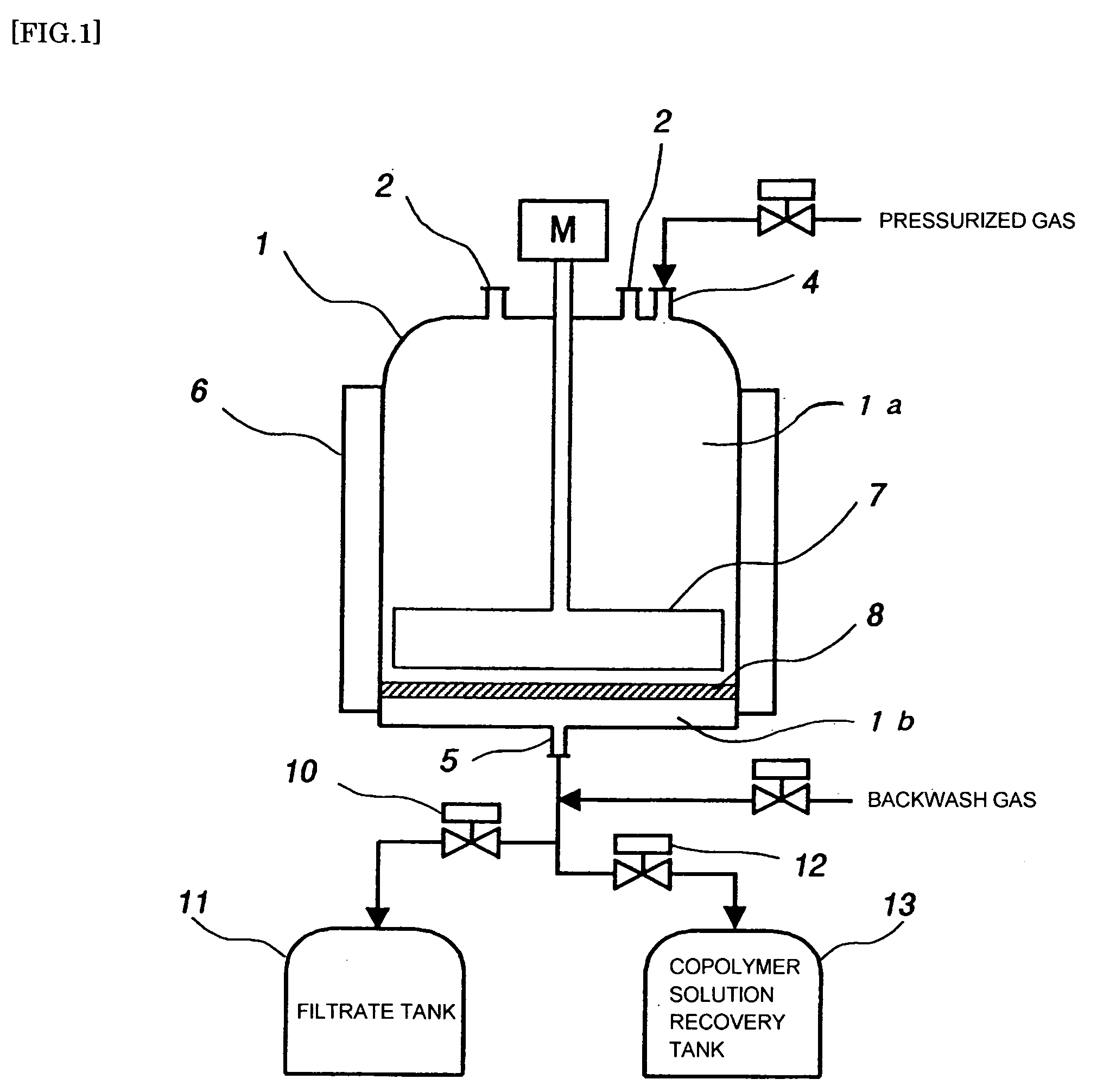Production process of copolymer for semiconductor lithography
- Summary
- Abstract
- Description
- Claims
- Application Information
AI Technical Summary
Benefits of technology
Problems solved by technology
Method used
Image
Examples
example 1
[0085] Methyl ethyl ketone (hereinafter abbreviated as “MEK”) (68 kg), 5-methacryloyloxy-2,6-norbornanecarbolactone (hereinafter abbreviated as “NLM”) (16 kg) and 2-methyl-2-adamantyl methacrylate (hereinafter abbreviated as “MAM”) (19 kg) were charged in a nitrogen-purged, feed preparation tank, and were then agitated at 20 to 25° C. to prepare a monomer solution. MEK (3 kg) and dimethyl-2,2′-azobisisobutyrate (0.6 kg) were charged in a nitrogen-purged polyethylene tank, and were then agitated at 10 to 20° C. to dissolve them into an initiator solution. Further, MEK (35 kg) was charged in a nitrogen-purged polymerization tank and then heated to 80° C. under agitating. The monomer solution and initiator solution, which had been prepared beforehand, were then fed separately at constant rates over 4 hours into the polymerization tank. An aging reaction was conducted for 2 hours while maintaining the polymerization tank at 80° C. even after the completion of the feeding. The polymeriza...
example 2
[0091] The procedures of Example 1 were repeated likewise except that in each of the precipitation and filtration steps and the washing and filtration steps, the temperature of methanol was maintained at 5° C. and the temperature was controlled at 3 to 6° C. The results are presented in Table 1.
example 3
[0092] The procedures of Example 1 were repeated likewise except that in each of the precipitation and filtration steps and the washing and filtration steps, the temperature of methanol was maintained at 30° C. and the temperature was controlled at 28 to 31° C. The results are presented in Table 1.
PUM
| Property | Measurement | Unit |
|---|---|---|
| Temperature | aaaaa | aaaaa |
| Temperature | aaaaa | aaaaa |
| Pore size | aaaaa | aaaaa |
Abstract
Description
Claims
Application Information
 Login to View More
Login to View More - R&D
- Intellectual Property
- Life Sciences
- Materials
- Tech Scout
- Unparalleled Data Quality
- Higher Quality Content
- 60% Fewer Hallucinations
Browse by: Latest US Patents, China's latest patents, Technical Efficacy Thesaurus, Application Domain, Technology Topic, Popular Technical Reports.
© 2025 PatSnap. All rights reserved.Legal|Privacy policy|Modern Slavery Act Transparency Statement|Sitemap|About US| Contact US: help@patsnap.com

